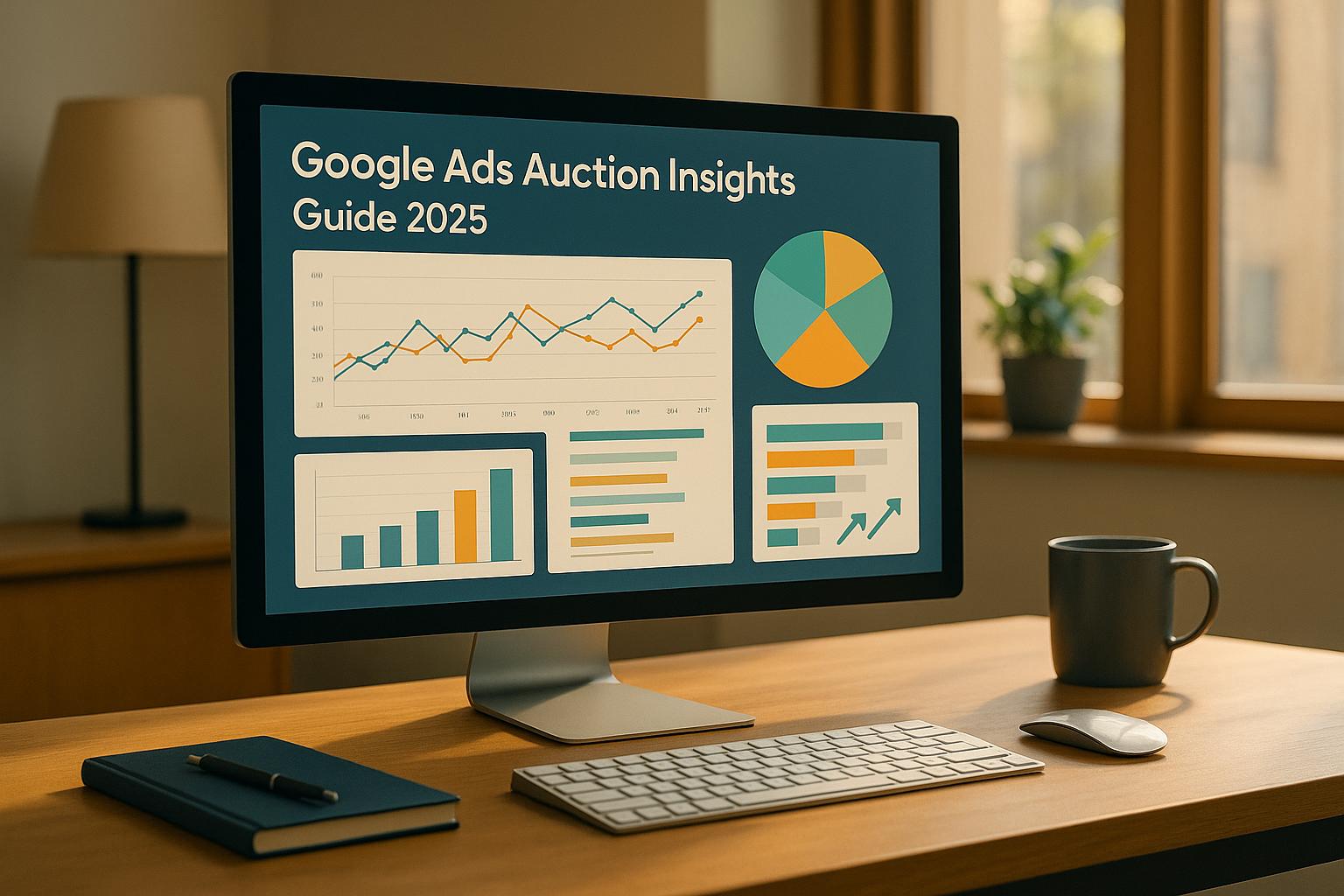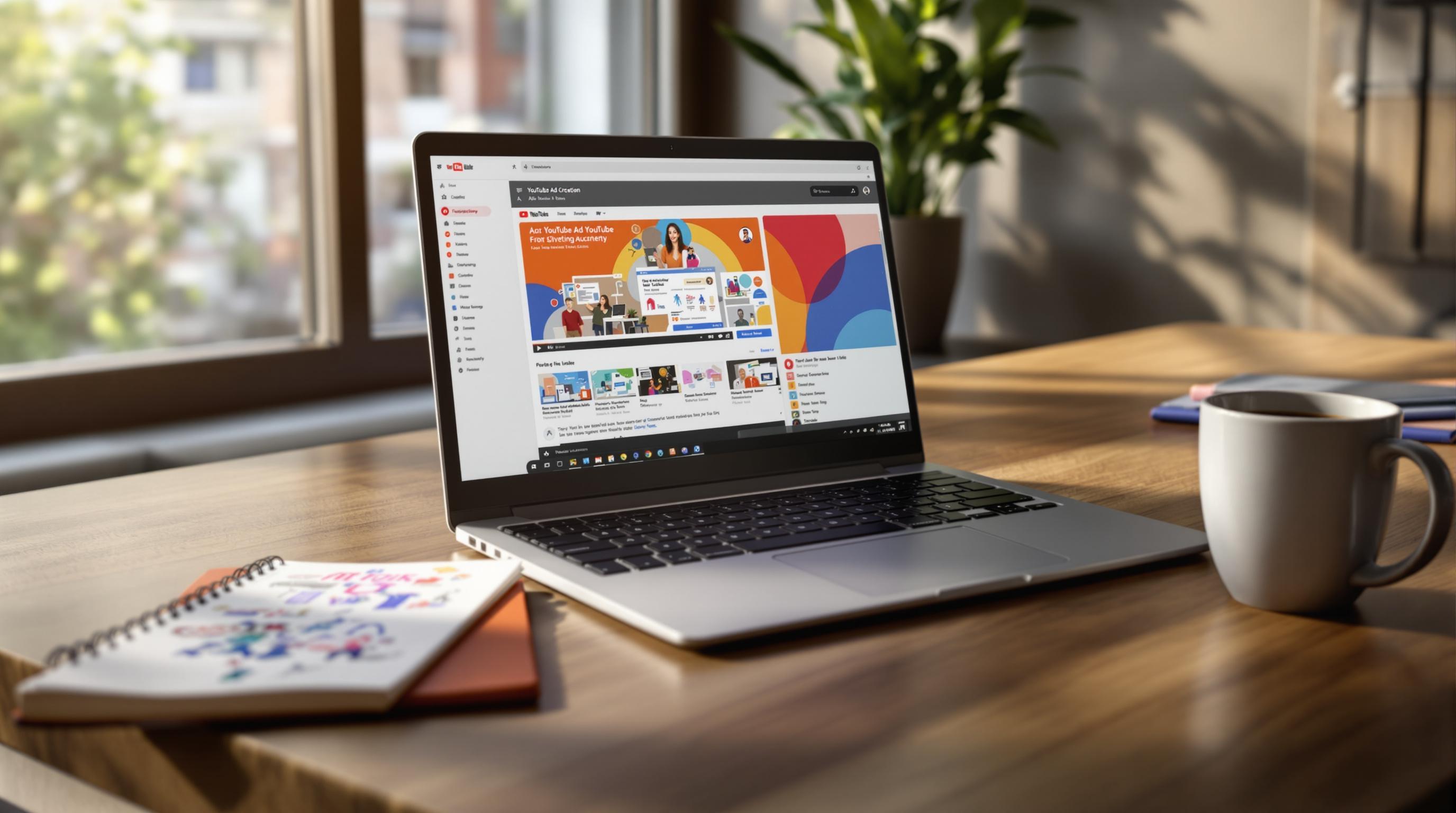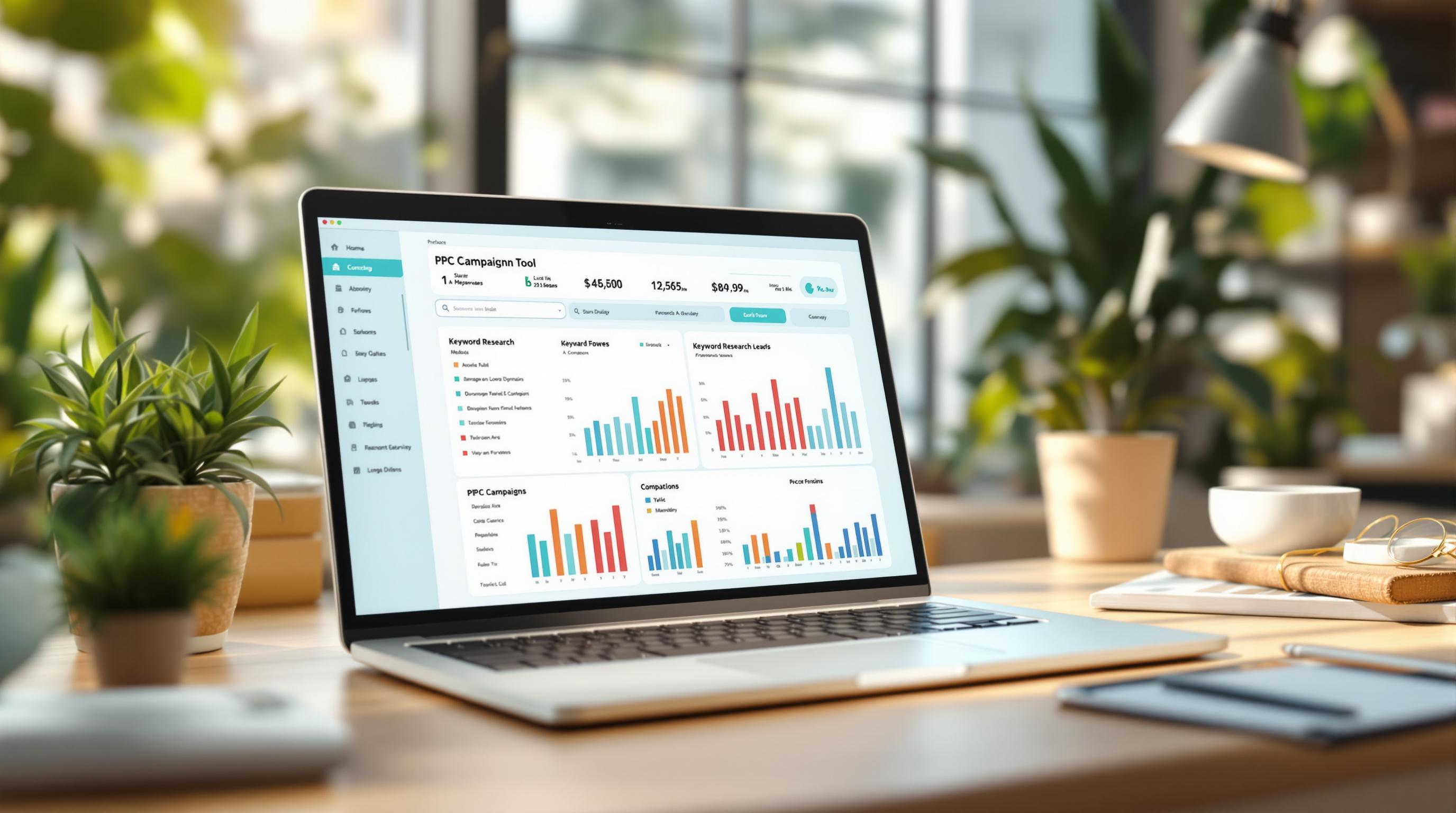Want better PPC results? Start with Customer Lifetime Value (CLV). CLV shows how much revenue you can expect from a customer over time, helping you focus on long-term profits instead of short-term wins. For PPC campaigns, this means smarter bidding, better targeting, and higher ROI.
Key Takeaways:
- CLV Formula: Multiply average purchase value, purchase frequency, and customer lifespan.
- Why It Matters: Retaining customers is 5x cheaper than acquiring new ones, and high-value customers often drive 90% of revenue.
- Optimization Tips: Use CLV to guide bids, segment audiences, and set ROAS targets for better returns.
- Tools to Use: CLV calculators, Google Ads' smart bidding, and audience segmentation features.
By understanding and using CLV, you can make your PPC campaigns more profitable and efficient. Keep reading to learn how to calculate CLV, avoid common mistakes, and apply these insights to your campaigns.
How Customer Lifetime Value Impacts PPC Marketing Strategy and Budget Allocation
CLV Calculation Methods
Understanding Customer Lifetime Value (CLV) can help fine-tune your PPC strategies by ensuring your ad spend aligns with the long-term profitability of your customers. Whether you use a straightforward or detailed approach, CLV calculations can directly influence your PPC decisions.
Simple CLV Formula
The basic formula for CLV is:
CLV = Average Value of Sale × Number of Repeat Transactions × Average Customer Lifespan
Here’s an example: If your average sale is $100, customers buy 4 times a year, and they typically stay active for 3 years, the calculation would look like this:
$100 × 4 × 3 = $1,200
This figure provides a baseline for your PPC bidding limits. A common guideline is that your CLV should be at least three times your customer acquisition cost (CPA) to ensure campaigns remain profitable.
Advanced CLV Methods
For more precise insights, advanced methods factor in profit margins and customer retention rates. Let’s compare the two approaches:
| Component | Basic CLV Formula | Advanced CLV Formula |
|---|---|---|
| Core Calculation | Average Sale Value × Frequency × Lifespan | (Gross profit per sale × (retention rate × (1 + discount rate))) / (1 + discount rate - retention rate) |
| Additional Factors | None | Subtract customer acquisition cost |
| Accuracy Level | Moderate | High |
| Best For | Small businesses, new campaigns | Larger campaigns, enterprise-level PPC planning |
The advanced formula is designed for more accurate predictions and includes profit margins, customer retention, and acquisition costs. It looks like this:
CLTV = (gross profit per sale × (retention rate × (1 + discount rate))) / (1 + discount rate - retention rate) - customer acquisition cost
This method is ideal for businesses managing complex PPC campaigns, as it reflects both profitability and customer retention trends.
CLV Calculation Errors
Avoid these common mistakes when calculating CLV:
- Using revenue instead of profit for calculations
- Ignoring discount rates, which account for the time value of money
- Forgetting to separate acquisition costs from CLV
To ensure accuracy, consider setting up a dashboard to track key metrics like average order value, customer retention rates, transactions per customer, and acquisition costs. This approach provides a clear view of your CLV and helps you refine your PPC strategies effectively.
sbb-itb-89b8f36
PPC Campaign Optimization with CLV
Use your CLV insights to fine-tune bidding, targeting, and ROAS, ensuring your campaigns deliver strong returns. Once you've calculated your CLV, apply these strategies to get the most out of your PPC campaigns.
CLV-Based Bidding
CLV data can guide your PPC bids to achieve long-term profitability. A commonly used benchmark is the 3:1 CLV-to-CAC ratio, which helps maintain a healthy balance between customer acquisition costs and lifetime value.
| Bidding Strategy | Best For | CLV Application |
|---|---|---|
| Target ROAS | High-value segments | Increase bids for customers with a 6x+ expected return |
| Target CPA | Mid-value segments | Set acquisition costs to one-third of the predicted CLV |
| Manual CPC | Testing new segments | Control spend while collecting CLV insights |
In addition to bidding adjustments, segmenting your audience by value can sharpen your campaign's focus.
CLV Audience Groups
Targeting specific customer groups based on CLV can significantly improve campaign results. For instance, an Australian self-storage company saw better-qualified leads by combining search intent with life events.
Here’s how to implement CLV-based audience targeting:
- Segment by Value Tiers: Group customers based on factors like purchase frequency and average order value.
- Tailor Messaging: Customize ad copy to address the unique needs of each segment.
- Adjust Bid Modifiers: Increase bids for high-value groups while scaling back on lower-value audiences.
ROAS Planning with CLV
Set your baseline ROAS targets at 600% (a 6x return) and adjust depending on the CLV of each segment. While the average ROAS on platforms like Amazon is about 300%, it varies widely across categories - consumer electronics often aim for 900%, while toys may average closer to 450%.
Key ROAS tips:
- Start with a 600% baseline ROAS for steady growth.
- Adjust targets to reflect the CLV of different customer segments.
- Regularly monitor breakeven ROAS to ensure every campaign remains profitable.
CLV Calculation Tools
Choosing the right tools for calculating Customer Lifetime Value (CLV) can make a big difference in the success of your PPC campaigns. From basic calculators to advanced platform features, these solutions help you maximize your return on investment.
CLV Calculator Options
Online CLV calculators are a quick and easy way to estimate customer lifetime value without needing complex spreadsheets. They can help guide your PPC strategy by providing actionable insights.
| Calculator | Key Features | Best For |
|---|---|---|
| WebFX CLV Calculator | Instant results, no contact info needed | Quick estimates |
| WebCitz Calculator | Detailed revenue projections, industry benchmarks | In-depth analysis |
| upGrowth CLTV Tool | Multi-factor analysis, customizable metrics | Advanced calculations |
When selecting a calculator, think about whether you need a historic CLV model (to analyze past customer behavior) or a predictive CLV model (to forecast future customer value using statistical methods). Predictive models are typically more useful for businesses with a solid amount of customer data.
CLV Features in Ad Platforms
Ad platforms now offer features that can directly incorporate CLV into your campaigns. Here are some highlights:
- Customer List Integration: Upload your customer data to segment audiences based on value and adjust bids accordingly.
- Dynamic Retargeting: Use retargeting tools to increase order values through cross-selling. For example, Meta's tools are effective for engaging users on Facebook and Instagram.
- Automated Value Optimization: Google Ads' smart bidding adjusts campaigns in real-time to focus on high-value customers. Keep in mind, though, that this may lead to higher click costs compared to Bing Ads.
Top PPC Marketing Directory
For those looking for specialized tools, the Top PPC Marketing Directory is a great resource. It includes:
- Campaign management systems with built-in CLV tracking
- Bid management tools that consider customer value
- Performance tracking solutions
- A/B testing platforms aimed at attracting high-value customers
Regularly using these tools allows you to shift your focus from short-term metrics to fostering long-term customer relationships.
Conclusion
Incorporating CLV calculations into your PPC campaigns can significantly improve profitability. Here's a summary of the key points and actionable steps to get started.
Main Points
CLV is a powerful driver of PPC success. For example, increasing customer retention by just 5% can lead to profit growth of 25% to 95%. Similarly, businesses earn an average of $2 in revenue for every $1 spent on Google Ads. These figures highlight the strong potential for better returns when CLV is properly factored into your strategy.
Action Steps
Follow this framework to seamlessly integrate CLV into your PPC campaigns:
| Phase | Action Items | Expected Outcome |
|---|---|---|
| Initial Setup | Calculate baseline CLV, set up conversion tracking | Understand current customer value |
| Campaign Optimization | Use Smart Bidding, build Customer Match audiences, A/B test ads | Target high-value customers effectively |
| Monitoring | Track phone calls, analyze CLV by segment, monitor CPA vs CLV | Identify data-driven opportunities |
| Continuous Improvement | Conduct audits, gather customer feedback, refine landing pages | Achieve sustained ROI growth |
By using metrics like average purchase value, purchase frequency, and customer lifespan, you can make these principles work for your campaigns.
Regular monitoring and adjustments are key. While most companies acknowledge CLV's importance, only 42% feel confident in measuring it effectively. Closing this gap can give your business a competitive edge.
Finally, focus on maintaining a strong CLV-to-CPA ratio. With 94% of satisfied customers likely to make repeat purchases, delivering excellent customer experiences will not only boost retention but also ensure long-term PPC success. Keep refining your CLV metrics to stay ahead.


